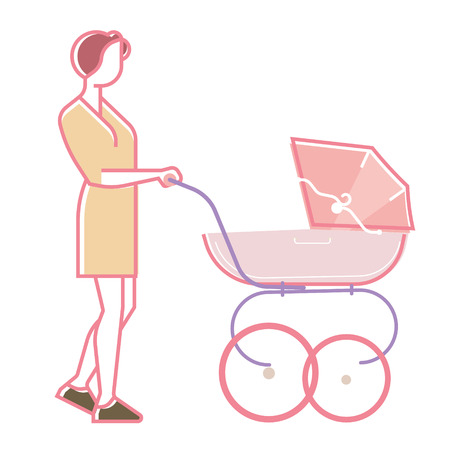What Is Permissive Parenting?
Permissive parenting is one of the four main parenting styles identified by psychologist Diana Baumrind. It is characterized by high responsiveness and low demands. Parents who follow this style tend to be very nurturing and loving but set few rules or expectations for their children.
Key Characteristics of Permissive Parenting
Permissive parents prioritize their child’s happiness and often avoid confrontation. They provide a great deal of freedom and rarely enforce strict rules or consequences.
| Characteristic | Description |
|---|---|
| High Responsiveness | Parents are warm, affectionate, and highly involved in their childs life. |
| Low Demands | There are few expectations for behavior, chores, or responsibilities. |
| Minimal Discipline | Rules are either loosely enforced or not established at all. |
| Child-Led Decision Making | Children have significant freedom to make their own choices without much parental guidance. |
| Avoidance of Confrontation | Parents prefer to avoid conflict and may give in easily to their childs wishes. |
How Permissive Parenting Differs from Other Styles
To better understand permissive parenting, it helps to compare it with other common parenting styles:
| Parenting Style | Main Characteristics | Discipline Approach |
|---|---|---|
| Permissive | High warmth, low demands, minimal structure. | Rarely enforces rules; avoids punishment. |
| Authoritative | High warmth, high expectations, balanced approach. | Uses positive reinforcement and reasonable discipline. |
| Authoritarian | Low warmth, high demands, strict rules. | Punishment-focused, enforces obedience strictly. |
| Neglectful (Uninvolved) | Low warmth, low demands, uninvolved in child’s life. | Lacks consistent discipline or guidance. |
The Appeal and Challenges of Permissive Parenting
The Appeal:
- Creates a close emotional bond between parent and child.
- Encourages independence and self-expression.
- Makes daily interactions less stressful due to fewer conflicts.
The Challenges:
- Lack of structure can lead to behavioral issues.
- Children may struggle with self-discipline and responsibility.
- Difficulties in respecting authority figures outside the home.
Understanding permissive parenting involves recognizing both its strengths and weaknesses. While it fosters a warm parent-child relationship, it may also create challenges when children lack the boundaries needed for long-term personal growth. In the next section, we will explore how this parenting style impacts a childs development over time.
2. The Appeal of Giving Kids More Freedom
Many parents choose a more lenient approach to parenting because they believe it fosters important qualities in their children. Permissive parenting, which allows kids more freedom and fewer rules, can encourage creativity, independence, and emotional expression. But why do some parents embrace this style?
Encouraging Creativity
When children have fewer restrictions, they often feel more free to explore their interests and passions. Without rigid rules, they can experiment, take risks, and think outside the box. This type of environment may help them develop problem-solving skills and innovative thinking.
Building Independence
Permissive parenting often emphasizes giving children the autonomy to make their own choices. This can help them learn responsibility and decision-making skills from an early age. Parents who follow this approach believe that allowing kids to make mistakes and learn from them prepares them for adulthood.
How Permissive Parenting Supports Independence
| Approach | Potential Benefit |
|---|---|
| Allowing kids to set their own schedules | Teaches time management |
| Letting children solve their own problems | Encourages critical thinking |
| Avoiding strict punishments | Promotes self-discipline rather than fear-based obedience |
Nurturing Emotional Expression
A permissive approach also prioritizes open emotional expression. Parents who adopt this style often encourage their children to share their feelings freely without fear of punishment or judgment. This can help children develop strong emotional intelligence and communication skills.
The Role of Emotional Support
When kids feel heard and validated, they may be more likely to develop confidence in expressing themselves. This can lead to stronger relationships with family members and peers as they grow older.

3. Potential Downsides: When Freedom Turns into Lack of Boundaries
Permissive parenting may seem like an effective way to foster independence and self-expression, but too much freedom can sometimes backfire. Without clear boundaries, children may struggle with behavioral issues, have difficulty respecting authority, and develop poor self-discipline. Let’s explore some potential downsides of permissive parenting.
Behavioral Issues
One of the most common challenges with permissive parenting is that children may develop behavioral problems. When kids are not given consistent rules or consequences, they might act out in inappropriate ways, struggle with frustration, or have trouble understanding social norms.
Difficulty with Authority
Children raised in a highly permissive environment often find it challenging to respect authority figures such as teachers, coaches, or future employers. Since they are used to making their own decisions without parental intervention, they might resist following rules or accepting guidance from others.
Poor Self-Discipline
Without structured expectations, children may have trouble managing their time, setting goals, or controlling impulses. This lack of self-discipline can affect their academic performance, personal relationships, and even future career prospects.
Comparing Parenting Styles and Their Impact on Children
| Parenting Style | Key Characteristics | Potential Impact on Children |
|---|---|---|
| Permissive Parenting | Few rules, high responsiveness, minimal discipline | Poor self-regulation, difficulty respecting authority |
| Authoritative Parenting | Balanced approach with clear rules and warmth | Strong self-discipline, better emotional regulation |
| Authoritarian Parenting | Strict rules, high expectations, low warmth | Anxiety, fear of failure, lower self-esteem |
| Neglectful Parenting | Lack of guidance and emotional support | Poor social skills, low confidence, academic struggles |
4. Finding a Balance: Encouraging Independence with Healthy Limits
Permissive parenting often emphasizes giving children freedom, but too much freedom without structure can lead to challenges. Parents can foster independence while still maintaining guidance by setting healthy limits that support responsibility and emotional well-being.
How to Provide Freedom While Maintaining Structure
Giving children the ability to make choices helps them develop confidence and decision-making skills. However, structure is necessary to ensure they learn boundaries and self-discipline. Here are some ways parents can balance both:
| Strategy | Description |
|---|---|
| Set Clear Expectations | Let your child know what is expected in terms of behavior, responsibilities, and routines. |
| Offer Choices with Limits | Provide options within boundaries, such as choosing between two bedtime stories instead of unlimited screen time. |
| Create Consistent Routines | A structured daily routine helps children feel secure while also allowing for flexibility when needed. |
| Encourage Natural Consequences | If a child forgets their homework, let them experience the consequences at school rather than rescuing them every time. |
Teaching Responsibility Through Age-Appropriate Tasks
A great way to balance freedom and structure is by assigning age-appropriate responsibilities. This helps children develop accountability while still feeling independent.
| Age Group | Suggested Responsibilities |
|---|---|
| Toddlers (2-3 years) | Putting toys away, helping set the table with supervision |
| Preschoolers (4-5 years) | Dressing themselves, feeding pets with guidance |
| School-Age (6-10 years) | Packing their backpack, doing simple household chores like sweeping |
| Tweens & Teens (11+ years) | Laundry, preparing simple meals, managing their own schedule |
Nurturing Emotional Well-Being While Setting Boundaries
A key aspect of permissive parenting is prioritizing a childs happiness. However, emotional well-being also comes from understanding limits and expectations. Parents can support their child’s emotions while maintaining authority by:
- Validating Feelings: Acknowledge emotions while guiding appropriate responses (“I see you’re upset about bedtime, but sleep is important for your health”).
- Praising Effort Over Perfection: Encourage trying new things without fear of failure.
- Being a Role Model: Demonstrate healthy emotional regulation through your own actions.
The Key to Balance: Flexibility with Firmness
The best way to encourage independence while maintaining structure is by being both flexible and firm. Parents should adjust rules based on their childs growth but remain consistent in enforcing core values like respect, kindness, and responsibility. By striking this balance, children gain confidence in making decisions while understanding the importance of limits.
5. Final Thoughts: Is Permissive Parenting Helping or Hurting Kids?
Permissive parenting is often seen as a way to foster independence and creativity in children. However, too much freedom without structure can lead to unintended consequences. So, is this parenting style ultimately helping or hurting kids? Let’s break it down.
Key Takeaways from Permissive Parenting
Permissive parenting has both benefits and challenges. Understanding these aspects can help parents adjust their approach for a more balanced style.
| Pros | Cons |
|---|---|
| Encourages creativity and independence | Can lead to lack of discipline and responsibility |
| Fosters strong parent-child relationships | May cause difficulty following rules outside the home |
| Allows children to express themselves freely | Potential struggles with authority figures |
| Creates a stress-free home environment | Can contribute to entitlement or lack of motivation |
How to Find a Balanced Approach
Instead of fully embracing permissive parenting or rejecting it entirely, parents can incorporate elements from different styles for a well-rounded approach.
Set Clear Boundaries While Encouraging Independence
Children thrive when they have the freedom to explore within established limits. Setting clear expectations while allowing choices helps them develop decision-making skills.
Use Positive Reinforcement Instead of Overindulgence
Avoid giving in to every request. Instead, reinforce positive behaviors with praise or rewards that encourage growth rather than entitlement.
Teach Responsibility Through Natural Consequences
Rather than shielding kids from mistakes, allow them to experience natural consequences in a safe environment. This helps them understand accountability.
Create Open Communication Without Losing Authority
Encouraging open dialogue strengthens trust, but maintaining authority ensures that children respect guidance and direction.
Final Thoughts: Striking the Right Balance for Your Child
No single parenting style works perfectly for every child. By blending warmth with structure, parents can provide the support kids need while still encouraging independence. Adjusting techniques based on a child’s personality and needs can lead to healthier development in the long run.


